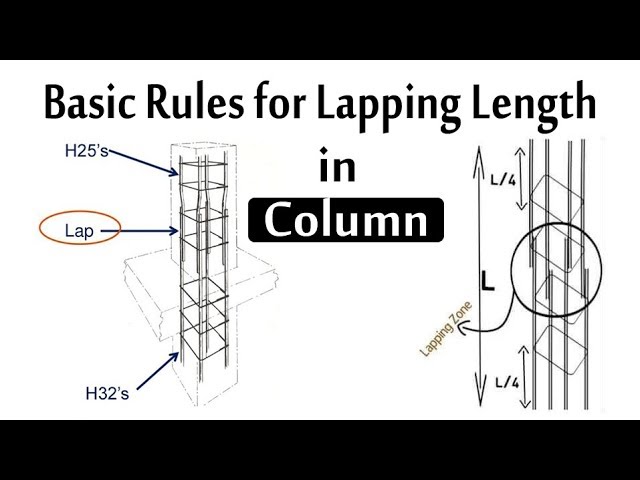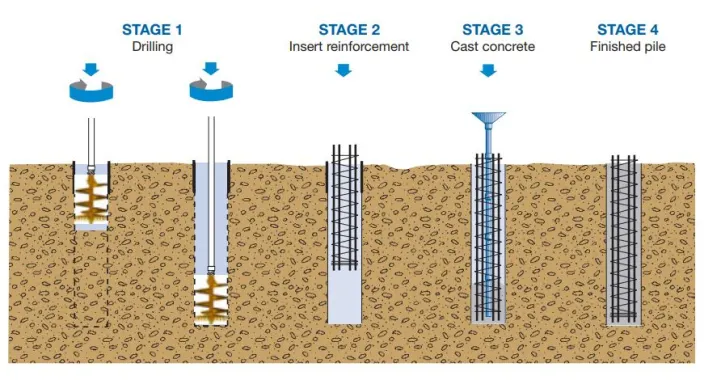In the construction industry, different slabs are used for construction purposes. The slabs are constructed to provide a horizontal surface for the roof, floor, bridge, and many other structures. Slabs are supported through reinforced concrete beams and walls cast along with column and structural steel beams from the ground.
Generally, slabs are constructed with reinforced concrete which carries the load through the structural beams to the column and then to the foundation and soil, used in framed and load-bearing structures.
Let us here discuss the types of slabs that are used for construction purposes. But before that, we will talk about what exactly is a slab and its various uses.
An Overview of Slabs
Slabs refer to the horizontal and flat structural elements made of reinforced concrete and receive loads of the building and transfer it to the columns from the beams and to the footing. Slabs are generally used in framed structures and load-bearing structures.
More than 20 different slabs have been practiced in the construction zones. The load-bearing structures help transfer the load from slabs to the load-bearing walls. Moreover, the thickness of the slabs may vary from 100mm-500mm. We will discuss all the types of slabs that are widely used in construction in the next section. Keep on reading!
Types of Slabs
As we mentioned above, there are many types of slabs used in construction. Find out the most widely used types of slabs that are being preferred by civil engineers around the world:
1. Composite Slabs
The slab is considered composite when made with two or more materials. The slab is usually made with steel decking and concrete. But the steel decking of rectangular, trapezoidal, and re-entrant shapes can also be used as the base formwork on which the reinforcement cages have been concreted and placed. The instruction of this decking system increases torsional stability during buckling.
Advantages
Extra formwork is not required.
Thickness can be reduced as per the construction.
Long span and economical.
Increase resistance against torsion and deflection.
Disadvantages
Required skilled laborers.
Not resistant to fire.
Where It Is Used
Tall buildings and steel structures.

2. Grade Slabs
The grade slab often called a slab on grade, is built at grade level and primarily anchored by the ground or soil beneath it. Grade slabs make up the majority of the first-floor slabs.
To avoid future uneven settlements, the foundation layer of the ground needs to be adequately compressed before the grading slabs are built. Gravel that has been tightly packed and humidity barriers make up the base layer. To enhance the slab’s structural strength, the depth must have a minimum of 100 mm and gets deeper as it gets closer to the edges. In contrast to traditional slabs, grade slabs may need expansion joints but not necessarily reinforcing.
Advantages
Easy to construct
No scaffolding and supported structure needed to construct
Disadvantages
Not economical
Where It Is Used
These slabs are used to construct the ground floor and open parking.

3. Sunken Slabs
Another one in the list of types of slabs is sunken slabs. The slabs given below the restrooms and washrooms are called sunken slabs. The slab’s level is dropped below the bathrooms to differentiate between dry and wet regions. The submerged slabs will also cover sewage pipes & fixtures.
Buildings with comparable floor layouts offer sunken slabs. The slab’s level can be raised or lowered depending on the situation. Water leaks in the pipes must be checked with particular attention.
Advantages
Helpful to cover sewage pipes and fixtures
Easy to construct
Not labor intensive
The level can be raised easily
Disadvantages
Water leaks can damage the slabs
Where It Is Used
Use on the comparable floor and sewage pipes

4. Low Roof Slabs
Lofts are modest roof slabs given at the structure’s skill level. For storage reasons, a cantilever slab with a low roof is created over the window and door frames. The lintel beam is built concurrently with the low roof slab.
Advantages
Ideal for creating a roof over windows.
Also, it can be used as a storage region.
Convenient construction.
Economical.
Disadvantages
Could not find any.
Where It Is Used
Residential building as a storage structure

5. Cantilever Slabs
Cantilever slabs are fastened at one end and floating at the other, as their name indicates. Due to the support situation, cantilever slabs deflect more than conventional slabs. Balconies are an excellent illustration of cantilever slabs.
Also Read: A Guide on Types of Cement and Its Uses
The bulging outer span is where the major reinforcement is located. The slab’s length is given with the secondary stabilizers. Cantilever slabs shouldn’t be stretched beyond 4 feet in RCC work.
Advantages
Doesn’t require rigid support on one side
Enhance elevation within the building
Easier to construct
Disadvantages
It is not cheaper to construct
Deflection increases
Where It Is Used
These slabs are used in residential buildings

6. Arched Slabs
Most often, arched slabs are seen in bridges. Similar to domes, arches use compressive forces to transmit loads. To withstand the wind stresses impacting the bridges, arches are constructed. Traditionally, arches were constructed using masonry, but current advancements have led to the creation of reinforced curving arch slabs.
Advantages
Excellent for bridges and other dome-shaped structures
Provide stability to the structure
Transfer load in an arch fashion
Disadvantages
Labor intensive
Not economical and take a longer time
Where It Is Used
Helpful in building tunnels and bridges

7. Prefabricated Slabs
Prefabricated slabs are manufactured in the factory or building site and brought to the building project. These types of prefabricated slabs are possible:
Post-tensioned slabs
Pre-tensioned slab
Ribbed slabs
Hollow core slabs
Advantages
Minimum labor required to construct this slab
It is extremely economical
It can be dismantled where ever possible
Formworks aren’t needed
Disadvantages
Not frugal for small construction projects
Connection is tedious
May prone to damage during construction
Where It Is Used
High rise buildings

8. Post-Tension Slabs
Prefabricated structures are frequently constructed using prestressed slabs. In addition to the usual reinforcing, post-tensioned, and pre-stressing slabs feature ducts that convey high-strength steel tendons.
After the concrete slab has dried and become firm, the steel cables are prestressed and secured at the ends. It’s known as post-tensioning. The post-interlocked slabs come in a variety of forms and are typically prefabricated.
Advantages
Longer life span
High load bearing capacity
Minimum deflection
Lighter sections are easily constructed
Disadvantages
Not so worthier for small projects
Connections have to be sealed properly
Where It Is Used
Building base and floors.

9. Pretension Slabs
Before the concrete cures, prestressed slabs with pretension are placed. The prestress strands are turned free, and the stress is transmitted to the slab once the slab has properly hardened.
The slab is cast once the high-strength ligaments are released.
Except for the stiffeners, pretension slabs are comparable to post-tensioned slabs. They share the same benefits and drawbacks. However, post-tensioned slabs are frequently employed because they can be formed in a shorter time.
Advantages
Longer life span
High load bearing capacity
Minimum deflection
Lighter sections are easily constructed
Disadvantages
Not so worthier for small projects
Connections have to be sealed properly
Where It Is Used
Building base and floors.
10. Pitched Roof Slabs
Sloping slabs with reinforced concrete rooftops are typically selected in areas with heavy rainfall. Proper planning must be done in advance to guarantee the seamless building of the pitched roofs. The triangle form is the most typical shape for a pitched roof.
Advantages
Improves thermal performance
Increase height for natural ventilation
Save material because of less depth
Give an aesthetic look
Disadvantages
Highly skilled labor is needed to construct such rigid structures
The vertical expansion of the building is not possible
Where It Is Used
It is used in public resorts, high-rise buildings, and restaurants.

11. Dome Slabs
Ellipsoidal dome slabs are typically utilized to improve the perspective of a construction. Most ancient constructions were constructed so that they could only withstand compressive stresses.
No compressive materials could withstand tension before the discovery of steel. As in domes, the load was therefore transmitted by axial compression. The advent of steel in the contemporary period gave rise to thin dome sections.
Advantages
Increase servicing area within a building
Improves height for ventilation
Reduce material cost
Provide an appealing look
Disadvantages
Require more construction time
The formwork shuttering is challenging
Where It Is Used
These slabs are usually constructed in museums, monumental buildings, and galleries.

12. Hardy Slabs
Robust slabs are a specific kind of slab made of hardy bricks arranged uniformly inside. The tough bricks typically have a depth of at least 200 mm. As a result, the slab’s depth is raised. Concrete hollow bricks make up sturdy bricks.
The tough bricks are arranged in rows with room between them over the formworks. The gap between the sturdy blocks is viewed as a little beam. Concrete is poured into these ribs, reinforcement is added, and the slab is homogeneously cast. It is primarily utilized in hot climates.
Advantages
Longer life span
Hollow spaces which improve insulation
Lighter section
Less use of concrete
Disadvantages
The deflection rate is high
Difficult for repairing
Not economical
Where It Is Used
Office buildings, hospital buildings, and public buildings.

13. Bubble Slabs
In bubble deck slabs, recyclable elevated ethylene, or HDPE, polymer balls are used in place of the concrete in the tension zone. The same basic idea behind hollow core slabs applies to bubble deck slabs. There is no structural value to the concrete in a section’s stress zone.
The removal of such concrete will not impact the effectiveness of the superstructure in sustaining the loads imposed on it. Concrete is a slab that may be reduced by 40 to 60 percent by using bubble deck slabs. This saves money while also lowering the structure’s dead weight.
Advantages
Very economical
Longer life span
Highly resistant to explosion
Low requirement of slab material
Disadvantages
Construction of this kind of slabs is challenging
Skilled labor required
More deflection
Where It Is Used
It is used in high-rise buildings and public buildings

14. Hollow Deck Slabs
Specialized precast concrete slabs, called hollow deck slabs, employ the stress theory established in a design subsection. While the steel handles the tension, the concrete handles the compression. The masonry in the tension zone serves just as a solid segment and has no other purpose.
The hollow deck slabs don’t offer concrete in the stress zone when this concept is considered. A minimal amount of concrete is given to hold the structural steel. It is possible to prestress or not postural the hollow deck slab.
Advantages
Prefabrication for super fast construction
It can be loaded completely after construction
Low construction material requirement
Gives pleasing appearance
Disadvantages
Skilled workers are needed
Cranes are needed to carry heavy slabs
Time-consuming construction
Where It Is Used
Multi-story prefabricated buildings, wall panels, and bridges.

15. Ribbed Slabs
Waffled slabs and ribbed slabs are pretty similar; however, they are frequently confused. A waffle slab has deeper matching portions than a ribbed slab, which contains wide grids or groupings of beams on the underside of the beam.
The ribbed slabs, which resemble waffle slabs, may be built for greater spans and are versatile, lightweight in section, affordable, and cost-effective. They have the same benefits and drawbacks as a grid or waffle slab.
Advantages
Easy to construct
Not labor intensive
Lighter sections
Less material is required to construct such structures
High load carrying capacity
Disadvantages
Fire transmission risk is higher due to the slab’s thickness reduction.
Electrical and mechanical installation is challenging.
Where It Is Used
Museums, public buildings, and galleries.
16. Waffled Slabs
Waffle slabs are thin, grid-like structures with hollow interiors. While maintaining the slab’s structural integrity, the hollow grid structure minimizes the slab’s consciousness.
A weight from above is transferred to the beams via the grids evenly spaced apart. The area between the ribs may occasionally be regarded as a beam and strengthened to improve the slab’s flexural stiffness.
Advantages
- Easy to construct
- Not labor intensive
- Lighter sections
- Less material is required to construct such structures
- High load carrying capacity
Disadvantages
- Fire transmission risk is higher due to the slab’s thickness reduction.
- Electrical and mechanical installation is challenging.
Where It Is Used
It is used in public airports, museums, and public buildings.

17. Flat Slabs
A column header and a dropping panel are cast homogeneously with the slab to create flat slabs, a modified form of flat plates. The flat slabs lack beams, yet the drop panel and pillar heads will seamlessly transmit the weights to the pillars.
The drop panels, which have a square or rectangular form, boost the slab’s shear strength. The drop panels reduce the deflections by adding deflection to the slab. Underneath the drop panels are pillar heads, generally sloped to fit the column measurements. A columnar head, a dropped panel, or both may be on a flat slab.
Most frequently used in irregular constructions lacking column symmetry are flat slabs. The drop panels and column heads function as a unique beam only allowed in that location.
Advantages
Building height can be saved
Reduce floor height
Reduce the time of construction
Electrical and mechanical installation is easy
Disadvantages
Increase the deflection risk
Large spans are not constructed
Where It Is Used
It is used in unsymmetrical buildings and parking grounds.

18. Flat Plate
Flat plates do not transfer weight from the slabs to the beams as regular slabs do. The stresses are conveyed directly to the supports in flat plates. The flat plate structure may be either one-way or two-way, depending on the construction strategy.
Advantages
Simplified framework because no other beam is used
The depth of the structure is reduced
The flat soffit is very easy to construct
Increase floor height
Disadvantages
Increases deflection risk
Reduce Stiffness
Large spans are constructed
Where It Is Used
Multi-story building and parking zones
19. Conventional Slabs
The term “conventional slab” refers to a slab sustained by beams and columns. The load is transferred from the slabs to the girder and finally from the girder to the columns. The slab’s width is modest in a standard slab, but the beam’s profundity is substantial.
These slabs are reinforced by horizontal and vertical bars, with the vertical bar referred to as distributing bar and the line graph as the principal reinforcement. Two varieties of conventional slabs exist.
a) One Way Slabs
One-way slabs are typical horizontal slabs that are rectangles in shape and have beams supporting two of their four sides. The beams on either side of the slabs act as supports. The deflected form is cylindrical as a result.
The larger span of a slab is, in one sense, more than twice as long as the shorter span. The shorter span is therefore bent as a result. More significant than two is the ratio of prolonged duration to shorter span.
To resist bending, the primary reinforcements are placed in the shorter directions, while the additional reinforcements are placed in the longer direction.
Where It Is Used
Verandahs
b) Two Way Slabs
Two-way slabs are also standard slabs, often rectangular and sustained on all four sides by a beam. The slab’s curved form resembles a dish or saucer. The greater span in two-way slabs is not more than twice as long as the shorter span. Less than two is the ratio of longer to shorter spans.
In this instance, bending is applied to shorter and more extended directions. Accordingly, the major reinforcements would be offered in both directions depending on the degree of bending. Two-way slabs are economically viable up to 6m by 6m in dimensions. Additionally, a two-way slab uses more iron than a one-way slab.
Where It Is Used
Multi-storage buildings and more significant construction sites
Advantages
Easy to construct
The formwork has a simple design
Mechanical, plumbing and electrical installation is easy
No skilled labor needed
Disadvantages
Become deeper with an extensive load
Formwork can’t be removed during the curing period
Also Read: Difference between One Way Slab and Two Way Slab
With this, we come to an end featuring all the different types of slabs that can be used in various purposes.
Types of Slabs – Bottom Line
Construction slabs are rigid structures that offer support and help to transfer the load to the ground through pillars. These 19 types of slabs are available and used in building constructions. The information will help constructors choose the right slab structure to support the types of walls and offer firm ground for the construction sites.
FAQs
What slab type is more economical and easy to construct?
If you are looking for an economical slab type then you should consider a flat plate slab often used in high-rise buildings. It is easy to construct as well.
What type of material is used in the slabs?
Concrete is a widely used material when it comes to constructing slabs. The reason being concrete is stiff that reduced the floor’s vibrations. Concrete also helps in achieving thermal storage and protection from fire.
What are the reasons to use slabs?
To have a roof over the head or in the other words, it gives covering shelter or flat surfaces in your construction areas.
How to know what type of slab is used in my building?
It is very easy to know the type of slab in your building. One-way slab has the ratio of long side/short side > 2. On the other hand, ratio of two-way slab is longer side / shorter side < 2.




